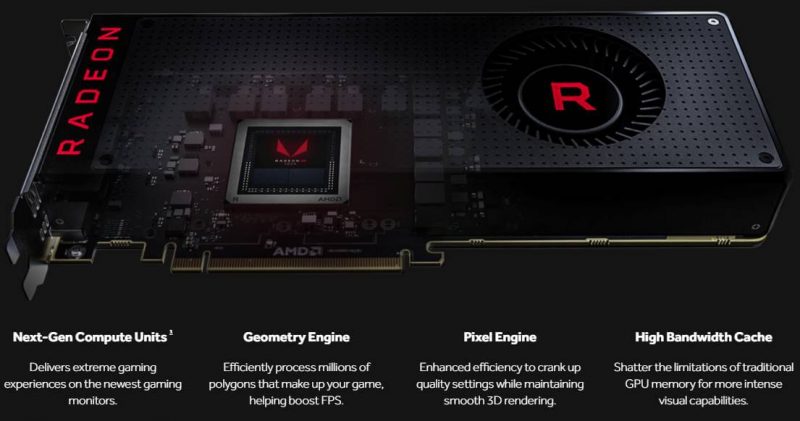AMD Radeon RX VEGA 56 8GB Graphics Card Review
Peter Donnell / 7 years ago
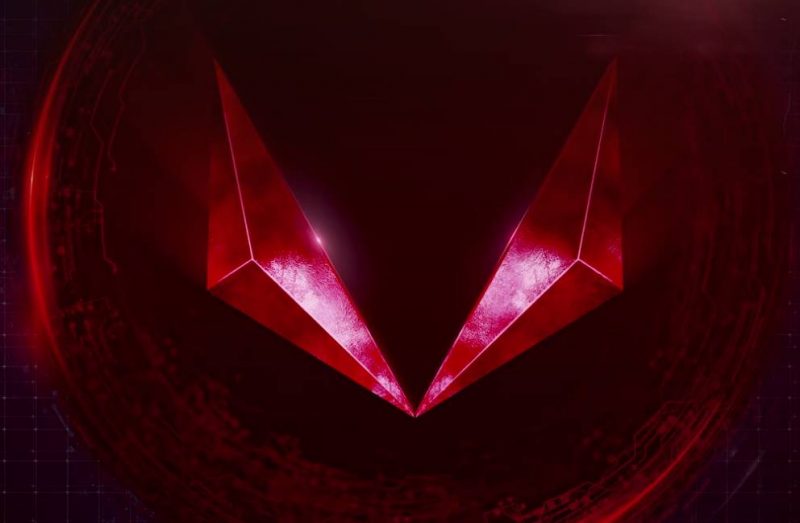
AMD Radeon RX VEGA 56
AMD’s new graphics cards are finally here, launching RX VEGA to the masses and we can’t wait to get it on our test bench. Promising extensive amounts of innovative design features, RX VEGA is a big step forward for AMD. While it’s unlikely the VEGA cards are going to take the ultimate performance crown, they were never designed to do so. VEGA has been built around a new architecture, and the use of HBM2 memory. It uses surrounding technologies to reduce pipeline overheads, cut latency times, reduce in-game stutter and lag, and more.
What’s exciting about VEGA is that these new cards are just the beginning, and we expect to see further developments from them in the not too distant future. Even more so, these cards have been designed to focus on optimisation, and AMD has furnished many developers with the tools they need to improve gaming performance on this hardware. We’ve seen many older AMD cards become increasingly competitive over months and even years after their release. Of course, we expect to see the same from VEGA.
Introducing Radeon RX Vega
What AMD Had to Say
“Radeon RX Vega Graphics is for extreme gamers looking to run their games at extreme resolutions, high framerates, challenging settings, and who want cutting edge features to carry them into the future.” – AMD
“Crank up your graphics quality and bring out every detail at incredible resolutions with the revolutionary “Vega” architecture. Radeon RX Vega cards power the latest displays and feature forward-thinking features like Radeon FreeSync™ 2 Technology.” – AMD
Specifications
The VEGA 56 we’re reviewing today is the lower-end GPU, while the VEGA 64 and more so the 64 Water Cooled edition being the higher end. That being said, it still packs some solid specifications and should sit between a GTX 1060 and GTX 1070 regarding performance. So basically, somewhere just above the Fury series of cards, which isn’t too sad. Let’s get a closer look, then fire up the test bench!
- Next-Gen Compute Units: 56nCU (3584 Stream Processors)
- Base GPU Clock: 1156 MHz
- Boost GPU Clock: 1471 MHz
- Memory Bandwidth: 410 GB/s
- Peak SPP: 10.5 TFLOPS
- Peak HPP: 21 TFLOPS
- High Bandwidth Cache (HBM2): 8GB
- Memory Interface: 2048-bit
- Board Power: 210W
A Closer Look
The card we have looks pretty basic, and what most people would call “reference.” However, upon handling it, this is one of the nicest reference cards I’ve ever seen. It has quite a bit of weight to it, and most of the exterior construction is either a soft-touch matte finish or metal panels. It looks gorgeous in real life and doesn’t stand out the same in the pictures.
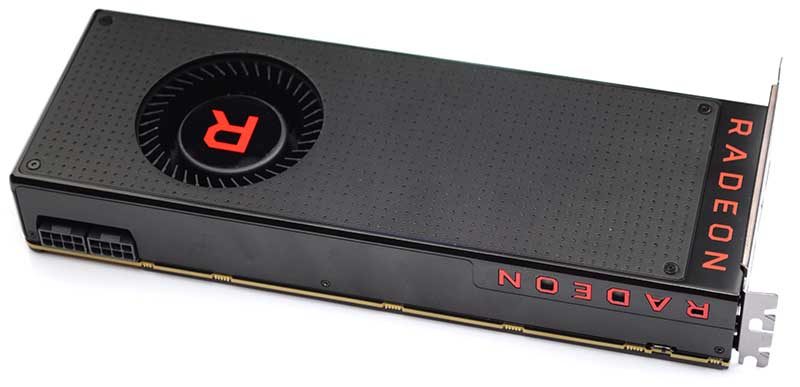
The blower type fan is most likely going to be quite noisy, but it’s bigger than most and may not be too loud. Of course, it’s designed to get the job done most of all, and I’m sure it will.
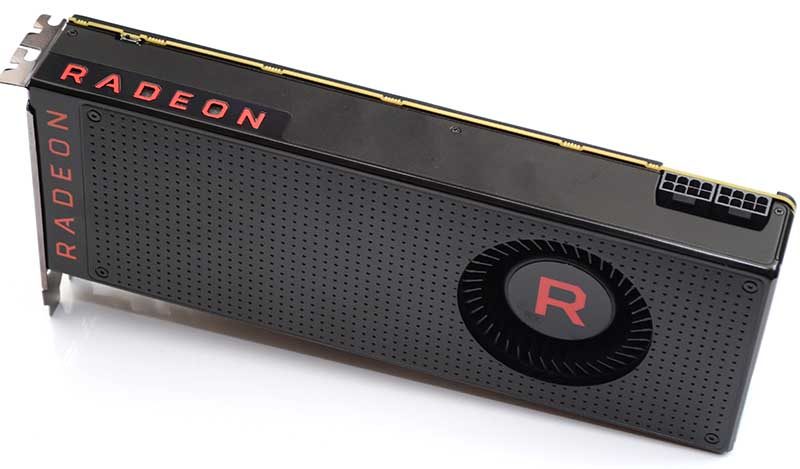
The Radeon LOGO stamped into the edge of the metal looks great too, and some LED backlights will have it glowing once powered on too.
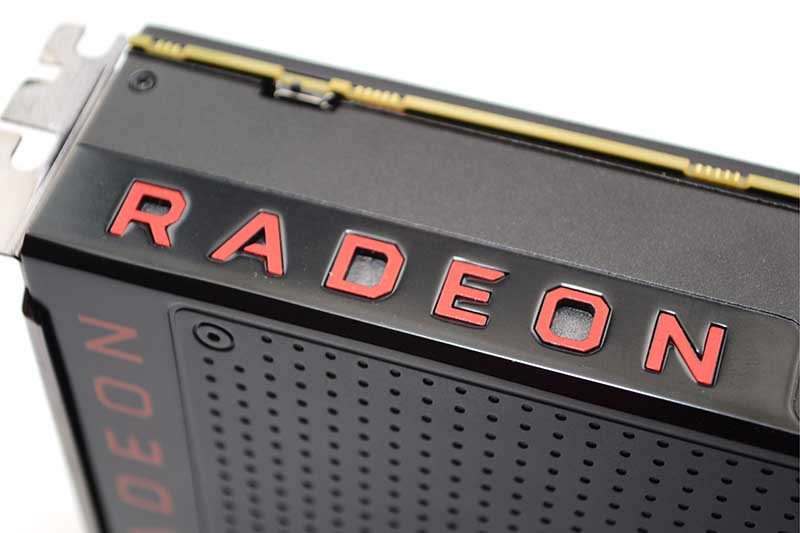
That lovely soft-matte dimpled finish looks gorgeous. Especially with the shine of the metalwork around the back of the card.
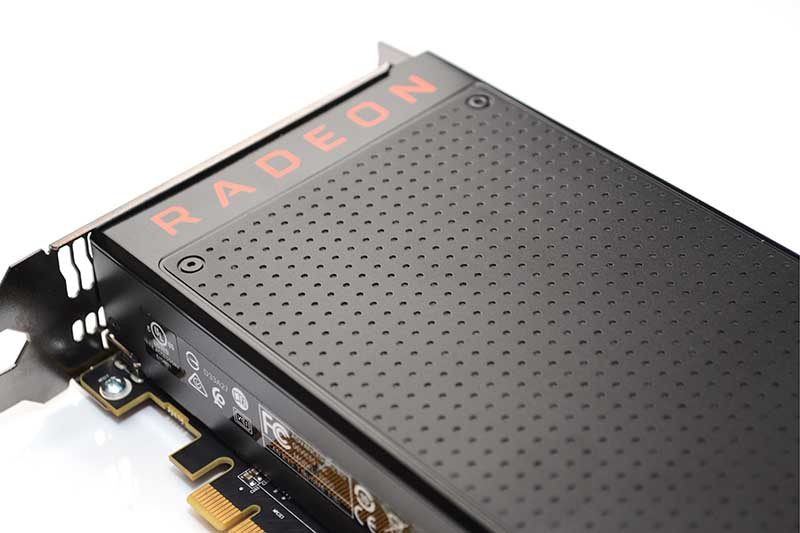
A full-size backplate gives the card a weighted and durable feel. The card won’t flex or bend at all with this installed!
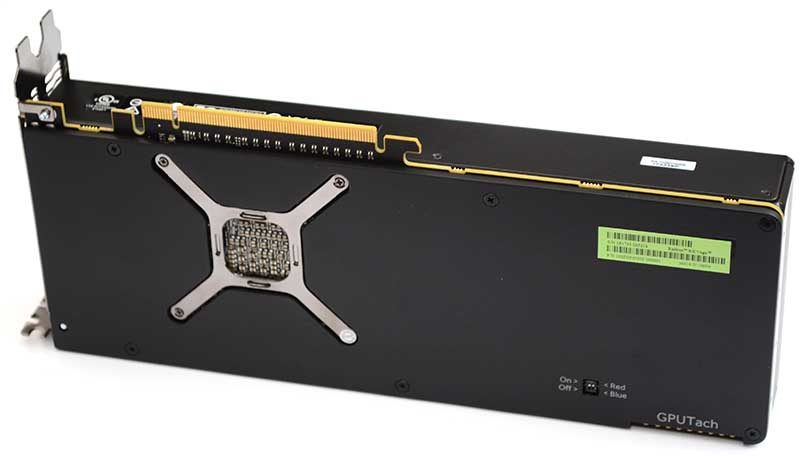
On the back, an LED light switch, which is handy to have. There’s also a GPUTach, allowing you to see how heavily the GPU is being loaded at any time.
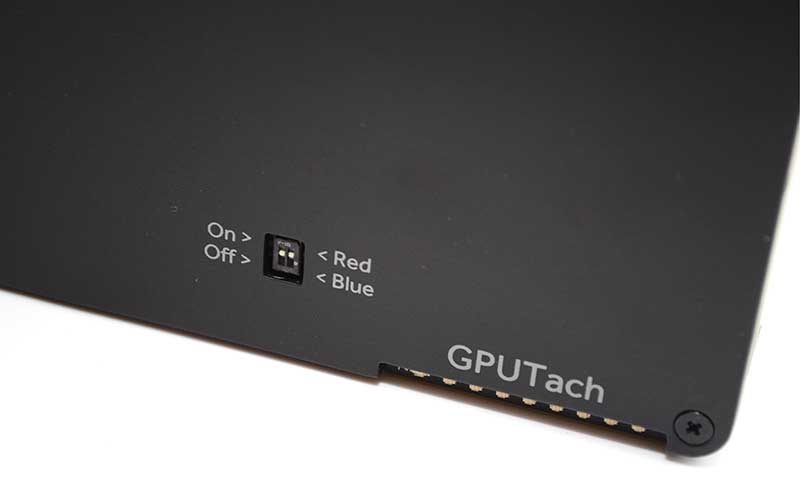
Around the back of the GPU, there’s plenty of ventilation. Of course, that’s needed given the blower-type cooler design. Below that, you’ll find 3 x DP and 1 x HDMI to hook up your displays or VR headsets.
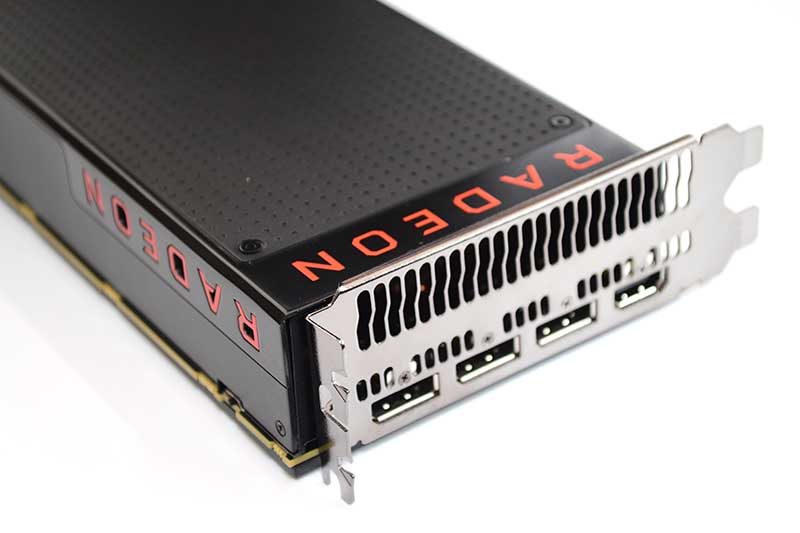
Finally, the card comes with 2 x 8-pin GPU power connectors, suggesting it’s going to be pretty thirsty, but we shall see.
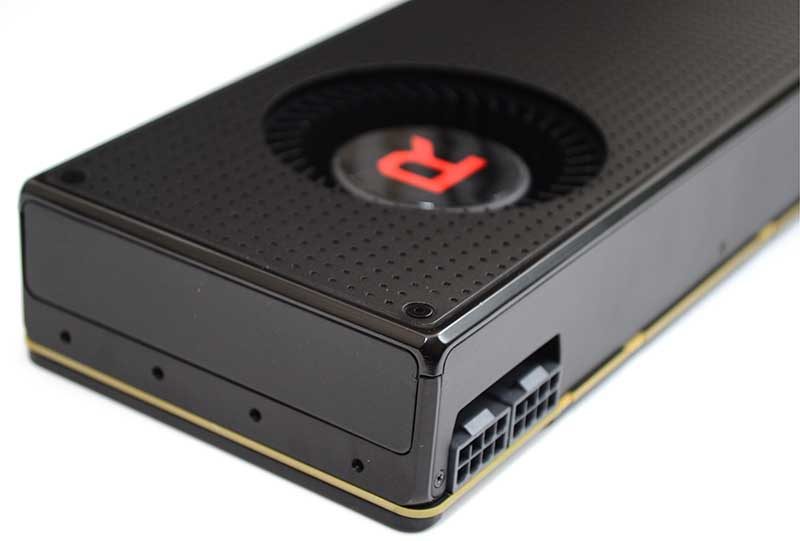
Testing & Methodology

Please note that on 16/04/2017, the graphics cards featured in this review have are retested. The retesting was done to implement new changes in the way we review, the settings we use, the software required and more. We’ve also made some slight hardware changes to our test benches, and all games were updated, as has the OS, graphics drivers, etc. Of course, this would mean new results would not be a fair comparison to old. For your reference, the last review to feature our past results is found here.
Here is the test system used for all graphics card reviews (pictured above) and game performance analysis:
Graphics Card Test System
- Motherboard – Asus Rampage V Extreme X99
- Processor – Intel Core i7 5960X at stock with Turbo enabled
- RAM – Crucial 16GB (2 x 8GB) 2666 MHz
- Graphics Card – Varies per review
- CPU Cooler – Noctua NH-D15S
- Power Supply – Be Quiet Power Zone 1000W
- Main Storage Drive – Toshiba OCZ VX500 500GB
- Chassis – Lian Li T80 Open Air Test Bench
- Operating System – Windows 10 64-bit
Additional Hardware
- “Killawatt” style electricity usage meter wall plug
- Precision Gold N05CC Decibel meter
Games
Throughout the testing procedure, we always use demanding presets which stress graphics cards to reasonable limits. However, in the interest of fairness, any technology which favors either AMD or NVIDIA is disabled. More specifically, this refers to PhysX, Hairworks and similar technologies. Additionally, we also disable all forms of AA, including FXAA, to gauge performance levels which aren’t impacted by sophisticated AA. Theoretically, we could have employed FXAA because it only has a minor impact on the frame-rate, but many users strongly dislike the hazy image this causes. V-Sync is always disabled in our testing, graphics card power usage set to optimised or balance, and the system power mode set to High Performance.
Some benchmarks may feature more cards, this is due to some tests being older or newer than others, and being used in other game specific feature tests we have conducted, so you’ll find all relevant cards included in each chart as we add or remove new and old tests.
Selecting strenuous presets especially at higher resolutions can cause hitching and other performance problems on graphics cards with lower amounts of video memory. For example, Rise of the Tomb Raider’s Very High textures requires 4GB of RAM to maintain a smooth frame-rate. In theory, we could run the benchmarks at the High setting, but this defeats the purpose of high-end graphics cards which are designed to cope with the absolute best graphics on the market. Furthermore, the notion of enthusiast cards sporting less than 4GB memory has become less of an issue. Of course, whenever we’re tackling more affordable GPUs, the settings will be altered accordingly and detailed for clarity. Identical settings are used for all resolutions, 1080, 1440, 2160, and 1440 Ultrawide unless otherwise stated.
Deus Ex: Mankind Divided Graphics Settings
For this game, we use the Very High preset, with some small changes to increase the Texture Filtering, turn off the AA, and all V-Sync settings.
- Preset: Custom
- Fullscreen: On
- Exclusive Fullscreen: Off
- DirectX 12: On
- VSync: Off
- Anti-aliasing: Off
- Texture Quality: Very High
- Texture Filtering: 16x Anisotropic
- Shadow Quality: Very High
- Sun Soft Shadows: High
- Depth of Field: Very High
- Level of Detail: Very High
- Dynamic Foliage: High
- Ambient Occlusion: On
- Specular Reflection Quality: Normal
- Vignette Blur: On
- Motion Blur: On
- Bloom: On
- Tesselations: On
- Screen Space Reflections: On
- Lens Flares: On
- Screen Effects: On
- Film Grain: On
Rise of the Tomb Raider Graphics Settings
- Preset: Custom
- Fullscreen: On
- Exclusive Fullscreen: Off
- DirectX 12: On
- MSAA: Off
- VSync: Off
- Texture Quality: Very High
- Texture Filtering: 16x Anisotropic
- Shadow Quality: Very High
- Ambient Occlusion: Very High
- Contact Hardening Shadows: On
- Parallax Occlusion Mapping: High
- Depth of Field: Very High
- Level of Detail: Very High
- Volumetric Lighting: On
- Screenspace Reflections: On
- Temporal Anti-Aliasing: Disabled
- Motion Blur: On
- Sharpen: On
- Bloom: On
- Lens Flares: On
- Cloth Physics: On
- Subsurface Scattering: On
- Chromatic Aberration: On
- Tesselations: On
Far Cry Primal Graphics Settings
- Graphics Quality: Custom
- HD Textures: On
- Textures: Very High
- Shadow: Ultra
- Post FX: High
- Geometry: Ultra
- Terrain: Very High
- Water: Very High
- Environment: High
- Anti-Aliasing: Off
- Volumetric Fog: Very High
- Motion Blur: On
Ghost Recon: Wildlands Graphics Settings
- Preset: Custom
- Antialiasing: Off
- Ambient Occlusion: SSBC
- Draw Distance: Very High
- Level of Detail: Ultra
- Texture Quality: Ultra
- Anisotropic Filtering: 16
- Shadow Quality: Ultra
- Terrain Quality: Ultra
- Vegetation Quality: Ultra
- Turf Effects: Off
- Motion Blur: On
- Iron Sights DOF: On
- High-Quality DOF: On
- Bloom: On
- God Raws: Enhanced
- Subsurface Scattering: On
- Lens Flare: On
- Long-Range Shadows: Ultra
Software
- 3DMark Firestrike
- 3DMark Time Spy
- Unique Superposition
- Deus Ex: Mankind Divided
- Rise of the Tomb Raider
- Far Cry Primal
- Ghost Recon: Wildlands
- CPU-ID HWMonitor
- TechPowerUp GPU-Z
Noise
Everyone has a reasonable noise level preference when it comes to comes to components on a computer. Some can handle all fans at 100% load to keep temperatures down; some want an entirely silent computer. To accurately gauge the noise output of a graphics card, we position a Precision Gold N05CC Decibel meter from one meter above our open air test bench and take an average reading at idle and load.
Power Consumption
With electricity becoming increasingly expensive across most parts of the world the need for computer components to become energy efficient has never been more relevant. Graphics cards are often the most power-hungry components of a desktop system so having a capable graphics card is crucial to keeping power bills under control. Power is tied to heat, so lower power consumption means a graphics card is likely to run slightly cooler and put out less heat into your system, meaning your other components will run cooler with improved longevity. AMD and NVIDIA have both made power consumption an integral part of the way graphics cards dynamically overclock, so the need for graphics card vendors to use efficient VRM and PCB designs is becoming essential to maximise performance.
We take power readings during idle state with no background applications running. Then again at 25%, 50%, and 99% completion of the Unigine Superposition benchmark, using the average as the final published result.
Temperatures
The cooling solution which graphics card vendors choose to implement is one of the main differences that consumers have to contend with when selecting a graphics cards. Apart from their acoustic properties, the thermal properties of graphics card coolers are critical. Lower temperatures are always better, and with AMD and NVIDIA opting to use dynamic overclocking algorithms that take temperature into account, it is important that graphics card vendors use high-performance cooling solutions to maximise performance. The era of graphics cards reaching critical temperatures are now in the past, but the importance of low temperatures remains. Lower temperatures mean better stability, longer component longevity, and lower fan speeds.
We take temperature readings after 10 minutes of desktop idle with no background programs running, then take the recorded maximum delivered from Unigine Superposition after a 4K optimised run, confirming the numbers are accurate with HWMonitor. Ambient temperature is always kept +/- 1c from 21c.
3DMark
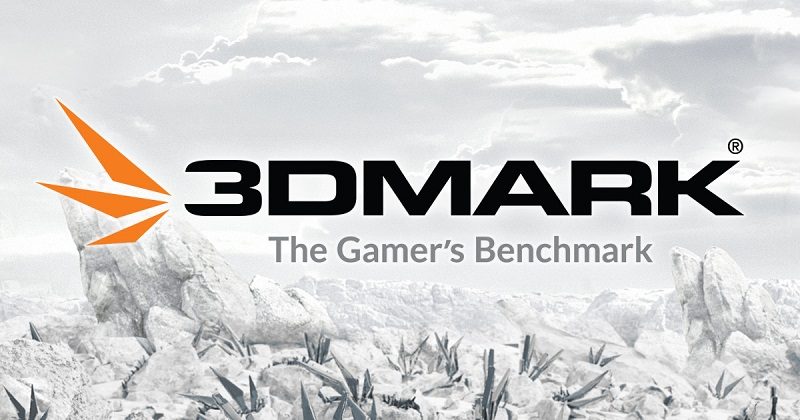
In 3DMark the Vega 56 is off to a great start, beating the GTX 1070, and a factory overclocked one at that. Even at 1440 and 2160P it puts on a strong show, so hopefully, that’s a sign of things to come.
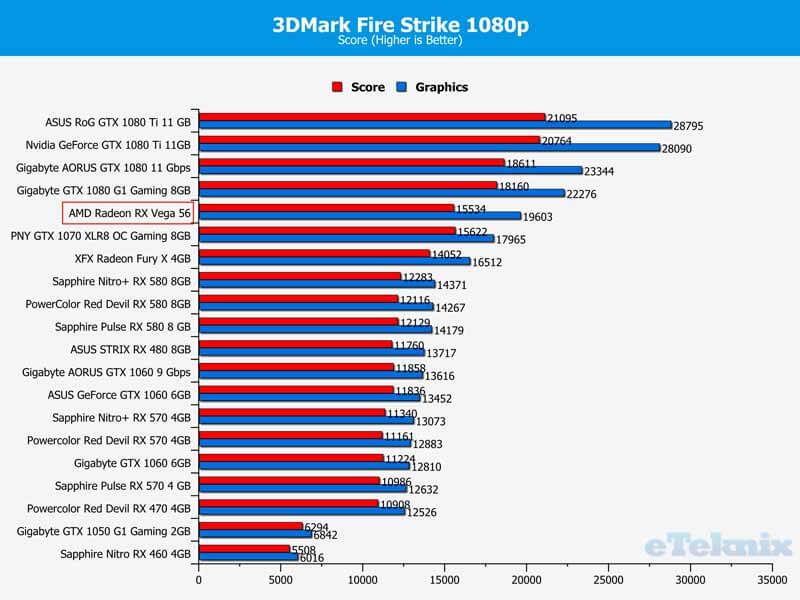
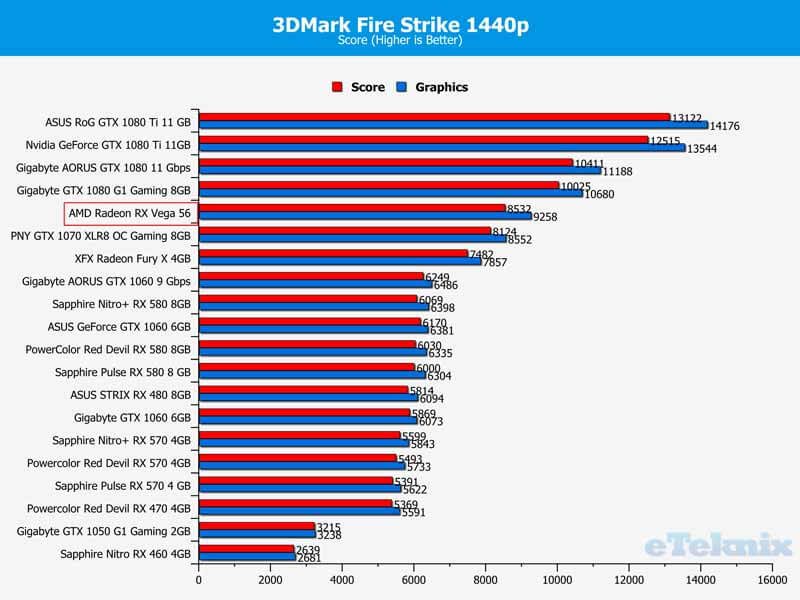
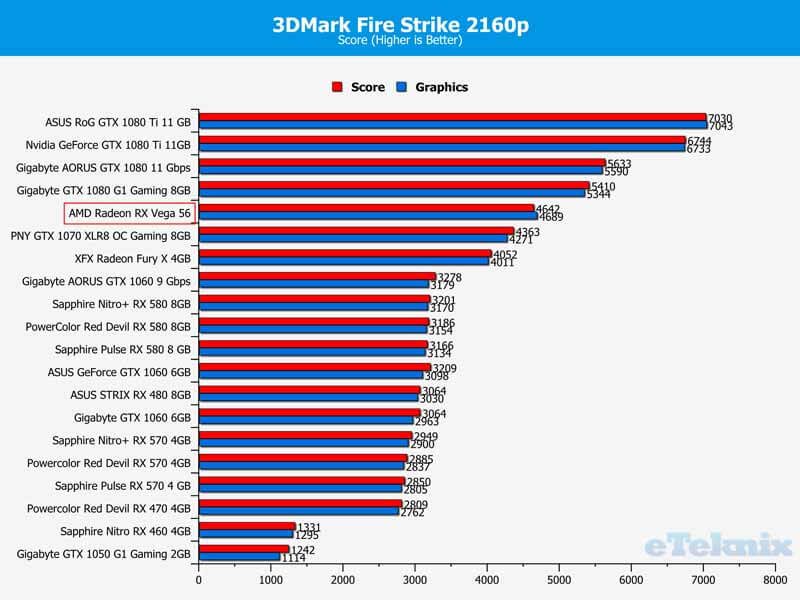
Time Spy runs using DX12 and is a test that also fairs well for the Vega GPU. It’s almost as fast as the GTX 1080 G1 Gaming, which is very impressive!
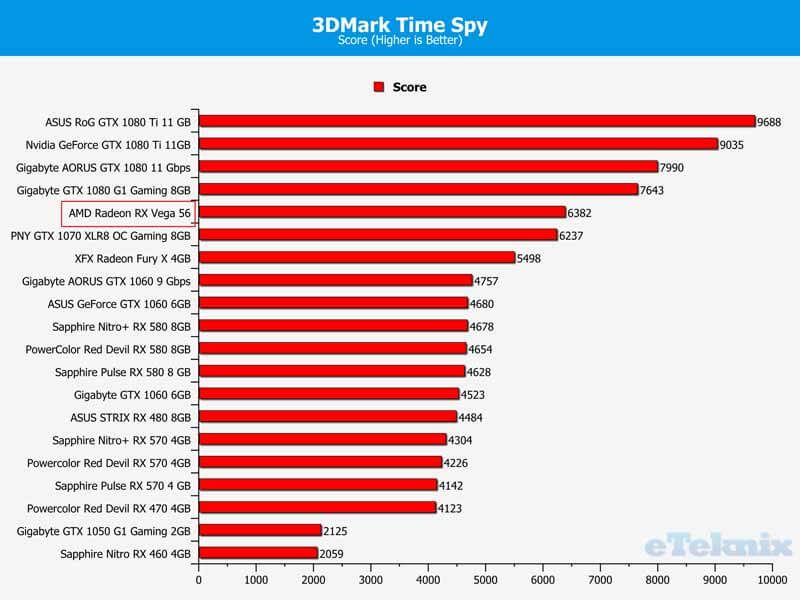
Unigine Superposition
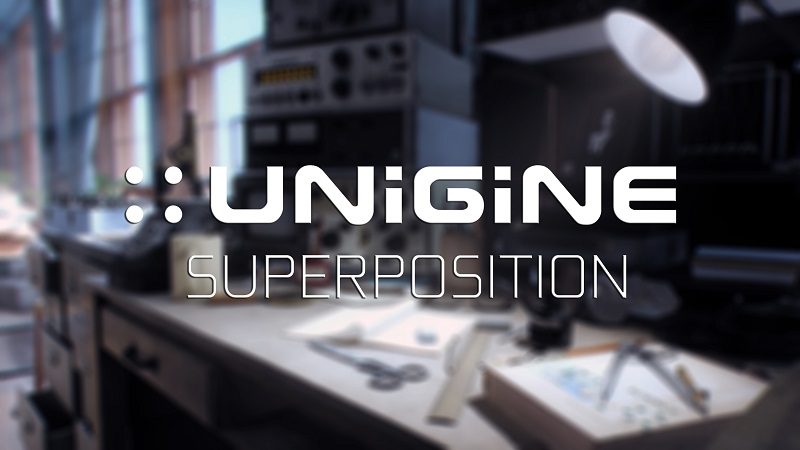
Unigine is very demanding on any modern GPU, but again the card held up very well, scoring similar to the overclocked GTX 1070 in both tests. Of course, synthetic benchmarks are only part of the story, so let’s test some real games!
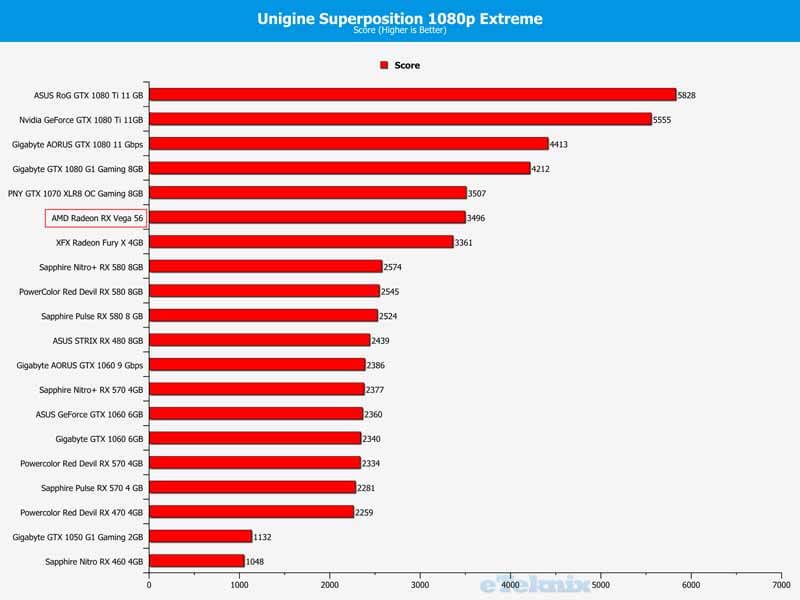
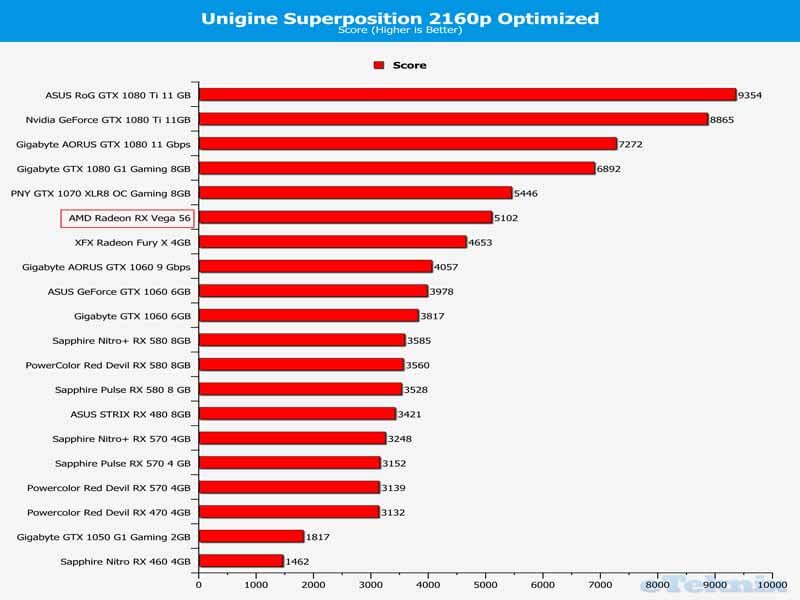
Deus Ex: Mankind Divided

Deus Ex paints a very different picture to the synthetic benchmarks. The card performed a little under the Fury X, which I didn’t expect. Of course, the Fury X was a higher end water-cooled GPU, this is more affordable (regarding launch price) GPU, so that’s still commendable either way.
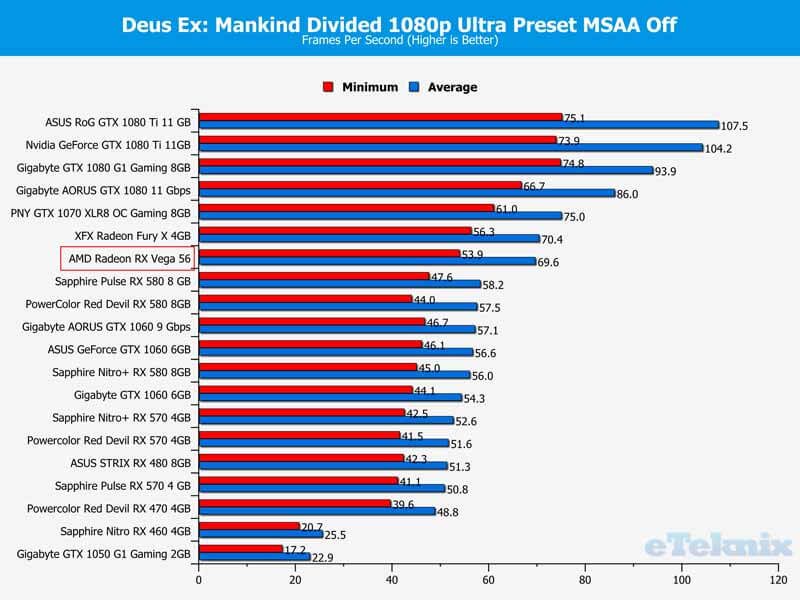
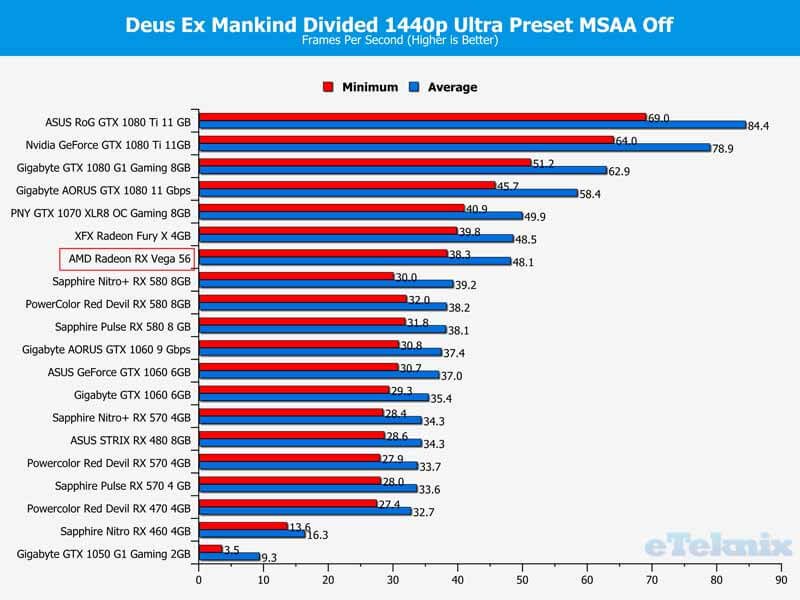
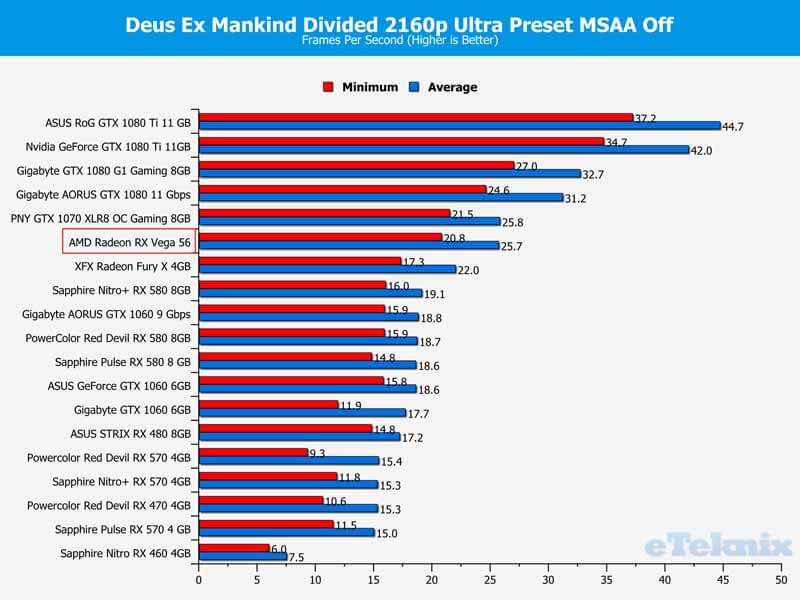
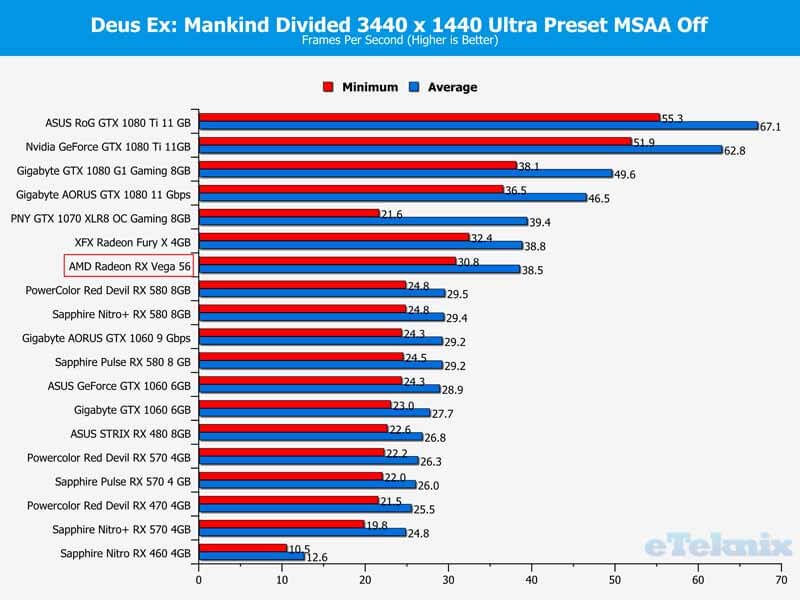
Rise of the Tomb Raider
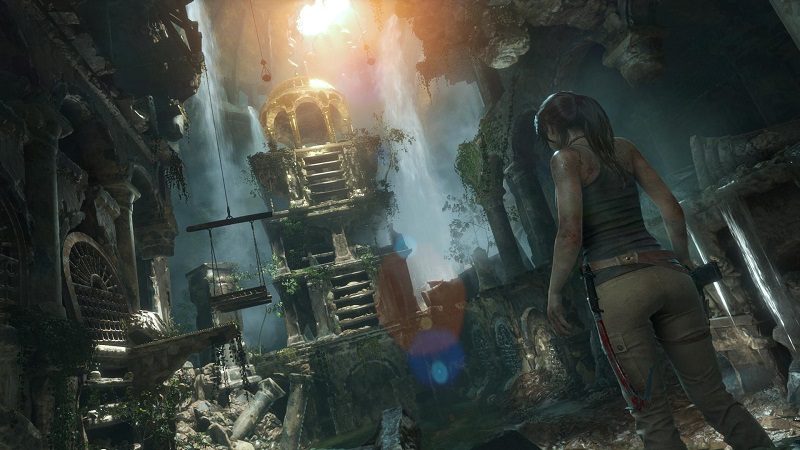
I was expecting bigger performance from Tomb Raider, but with this one being Nvidia optimised, it favors the green team. Of course, the performance is still excellent, but the GTX 1070 is well in the lead, and the Vega is more inline with the Fury X again.
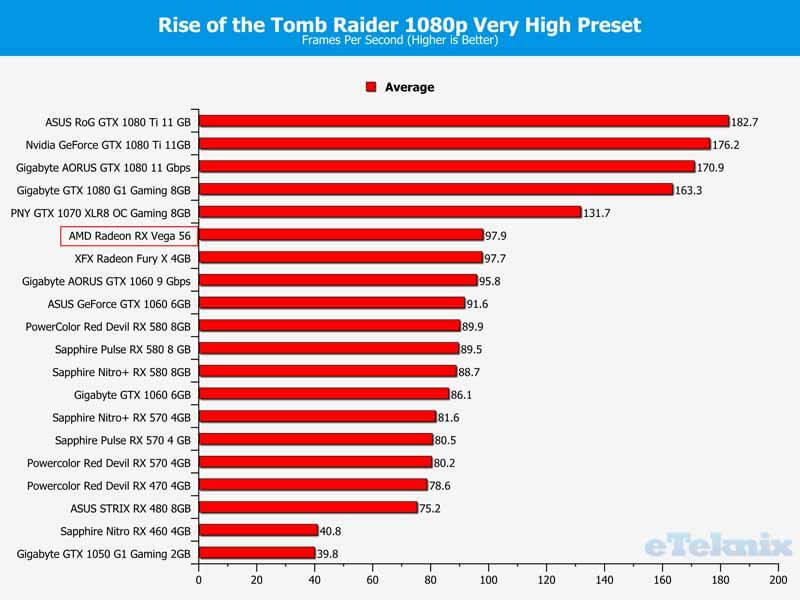
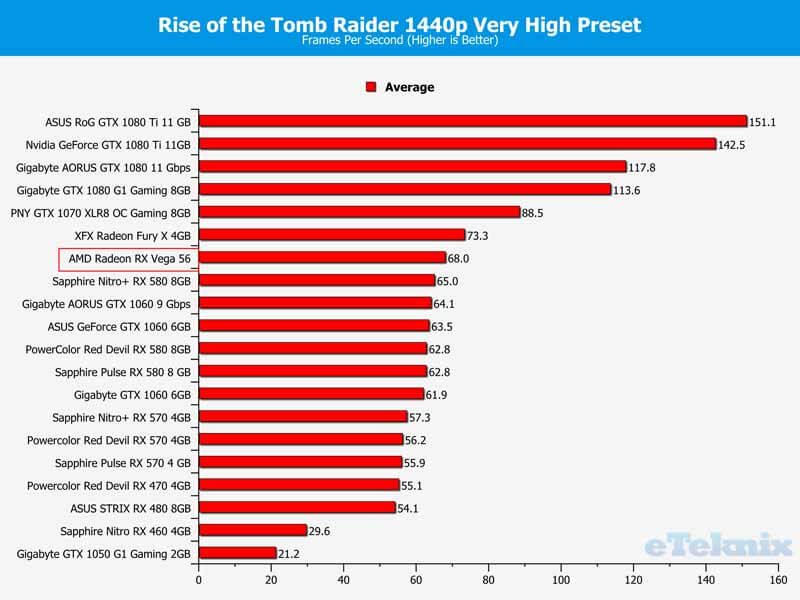
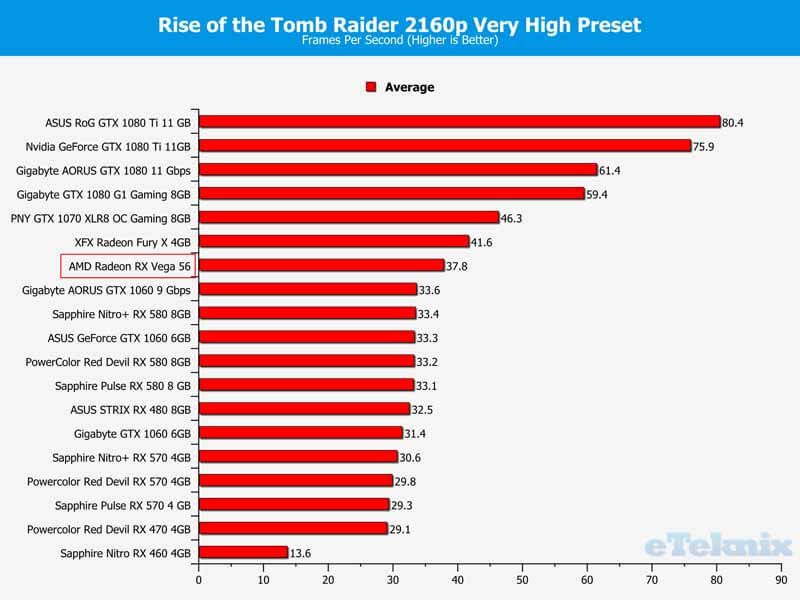
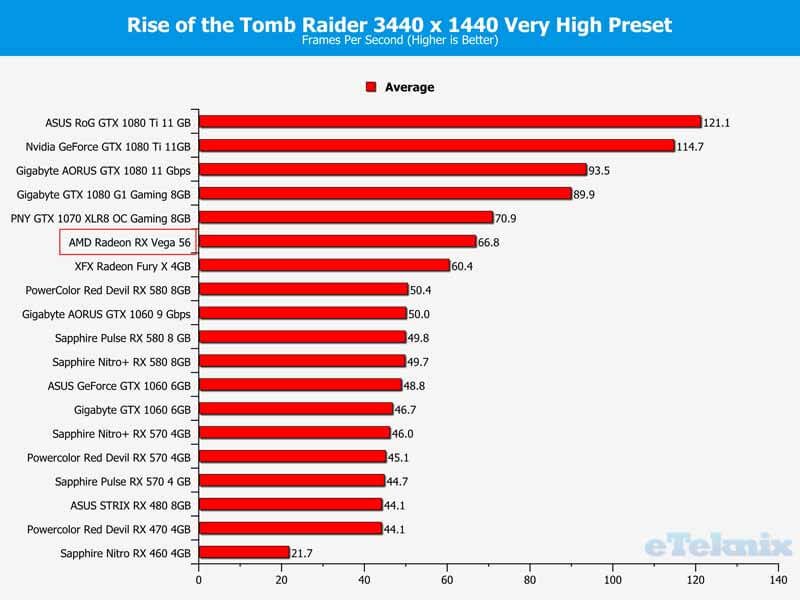
Far Cry Primal

Again, the Vega 56 is pretty high up on the charts; there’s clearly no issues with the gaming performance. However, it’s just now wowing me here, and the performance in this game is more in line with the GTX 1060, not the GTX 1070. Of course, things are improved at 4K, where that higher memory bandwidth allows the Vega to move up a few places on our charts.
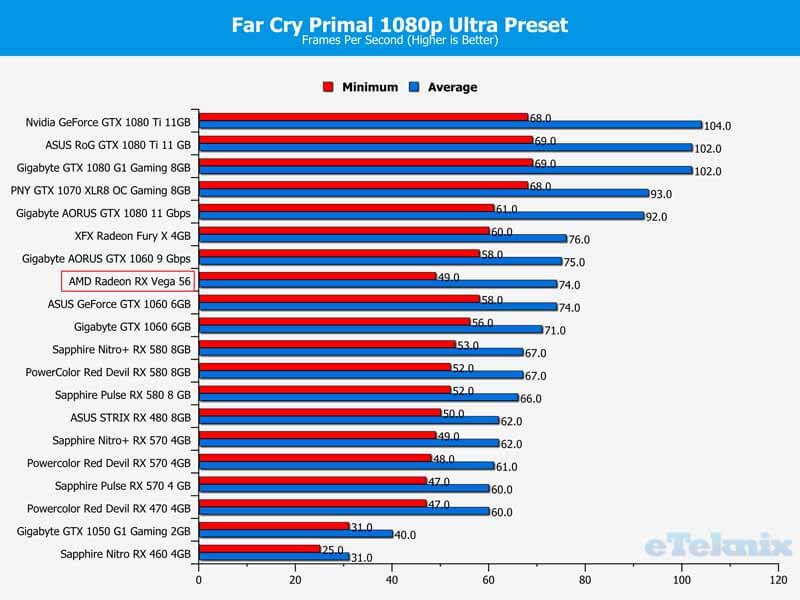
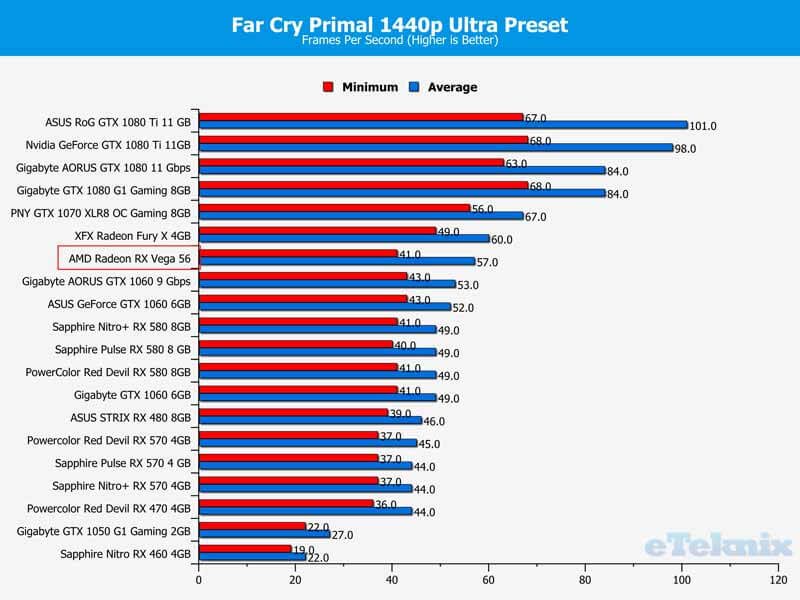
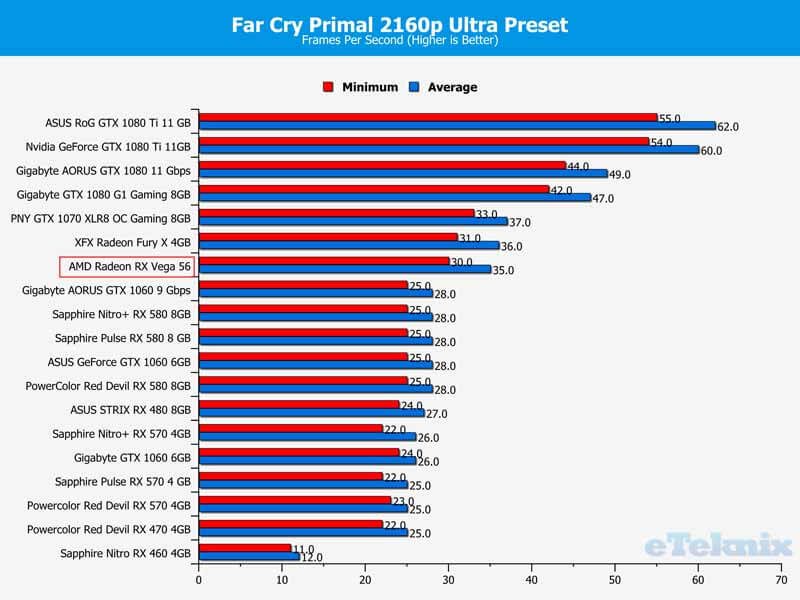
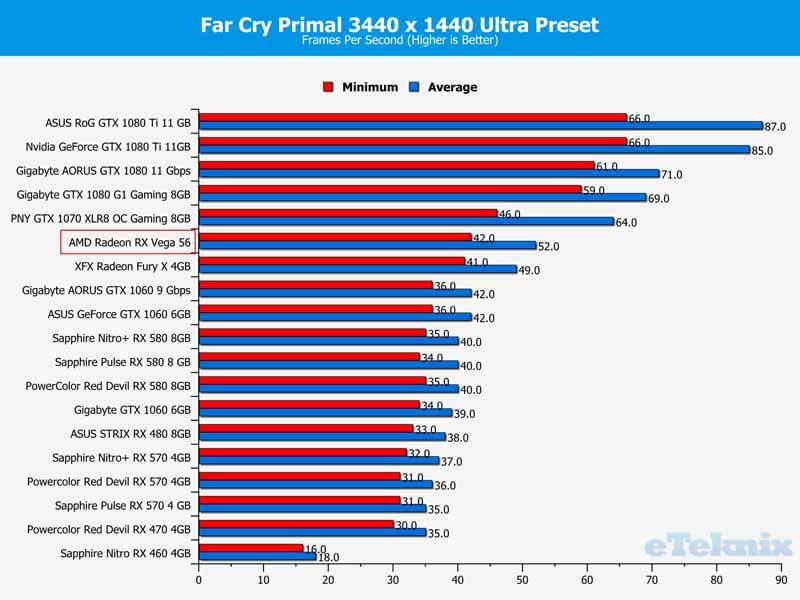
Ghost Recon: Wildlands
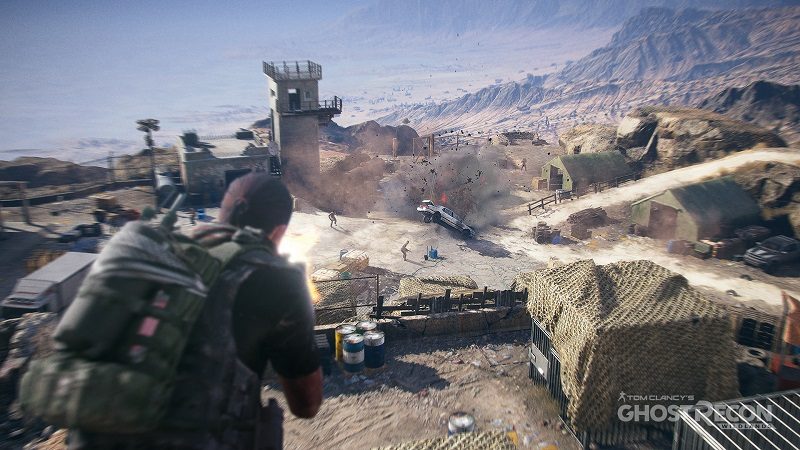
As demanding as it can be, the Vega 56 put on a good show in Ghost Recon. Clocking performance between the GTX 1060 and GTX 1070 is no bad place to be for the more affordable of the two Vega GPUs launched this month. I would stress again that our GTX 1060 is the 9 Gbps model, and the GTX 1070 is a high-end overclocked model, so the Vega 56 is putting on a stronger show than it seems given its reference design.

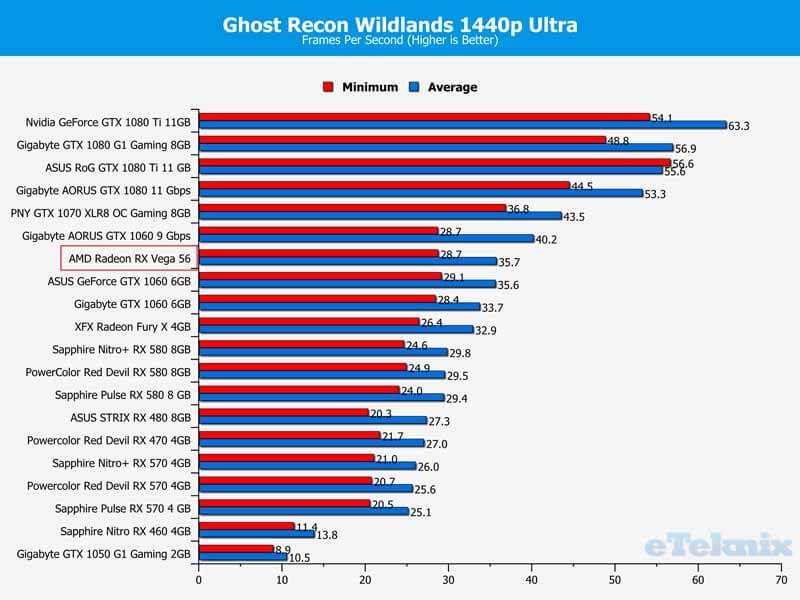
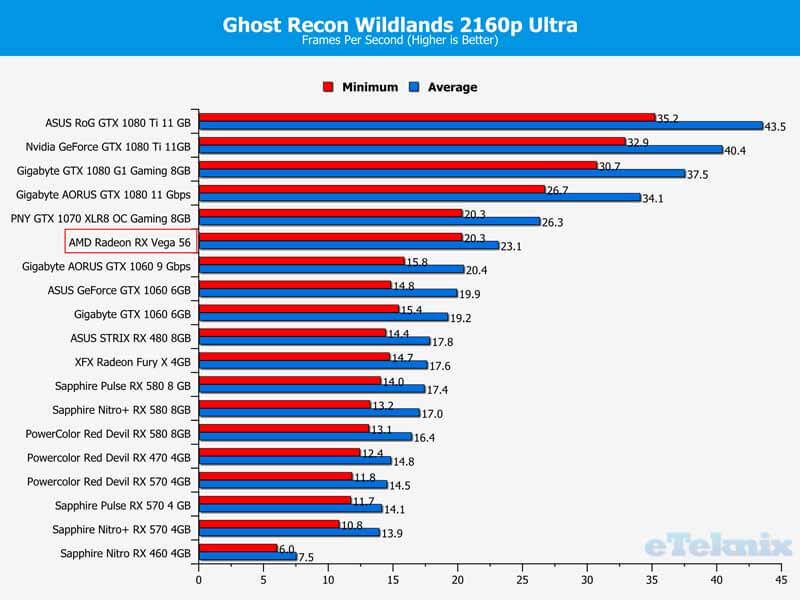
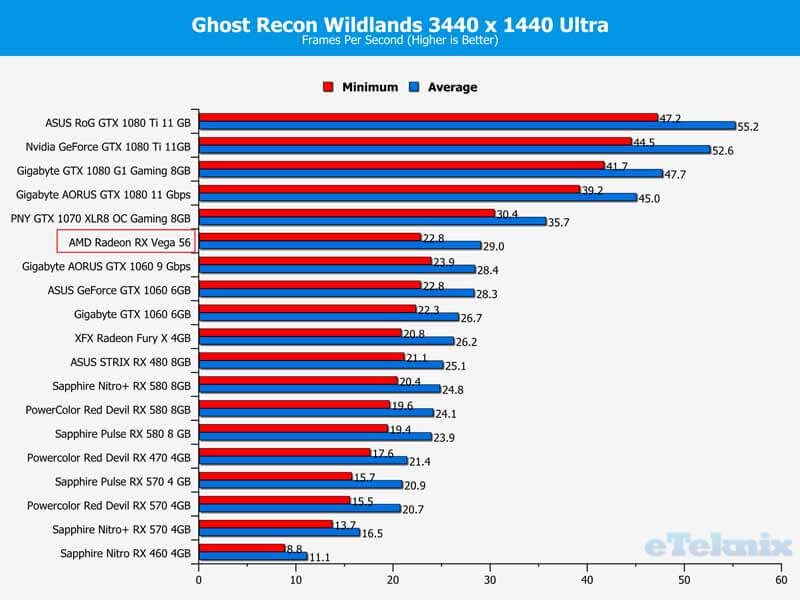
Acoustic, Thermal and Power Testing
Acoustic Performance
It will come as no surprise that as our only reference cooler car, it’s also one of the loudest. It’s noticeable and has that classic hair dryer sound associated with a blower type card. Of course, if you fit an aftermarket block or cooler, this is the best model to get as you’re not paying for 3rd party cooling hardware you don’t need or want.
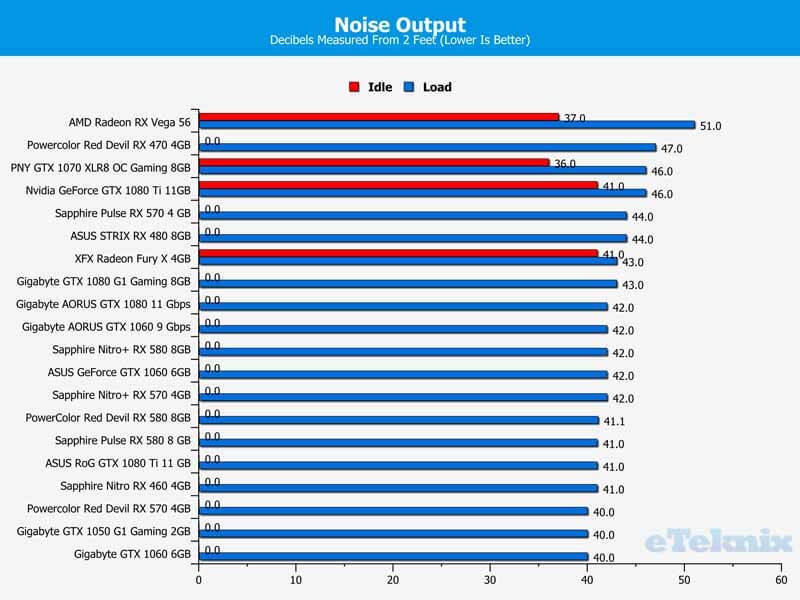
Thermal Performance
Temperatures are very good, especially given the cooler design. I could comfortably reduce that fan speed a little. However, I can’t wait to see a big cooler model from the likes of Sapphire or ASUS in the near future.
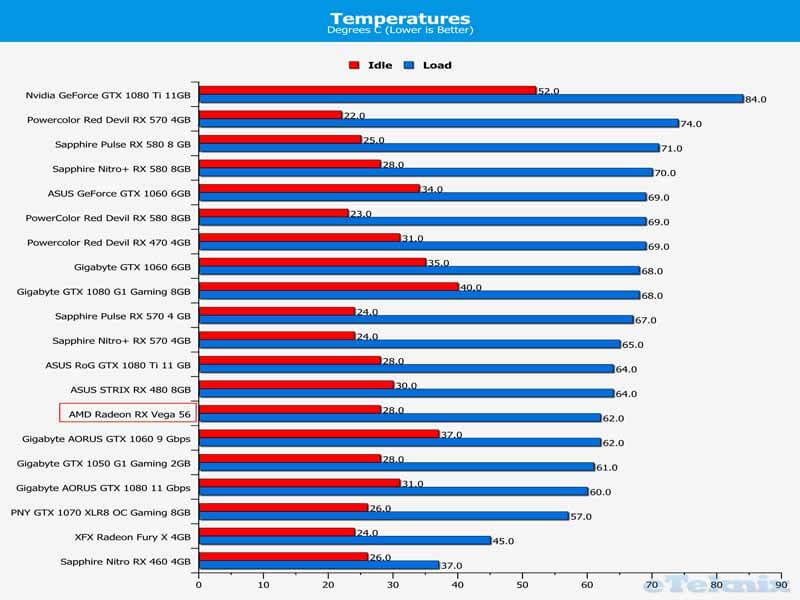
Power Usage
As expected, the card is a little power hungry concerning its performance. It uses more power than the GTX 1060, and obviously less than the GTX 1080. However, It’s more efficient than the RX 580 series, and hammers that card regarding performance, and a lot less power needed compared to the Fury X. Overall, lower power requirements and more performance from the AMD camp.
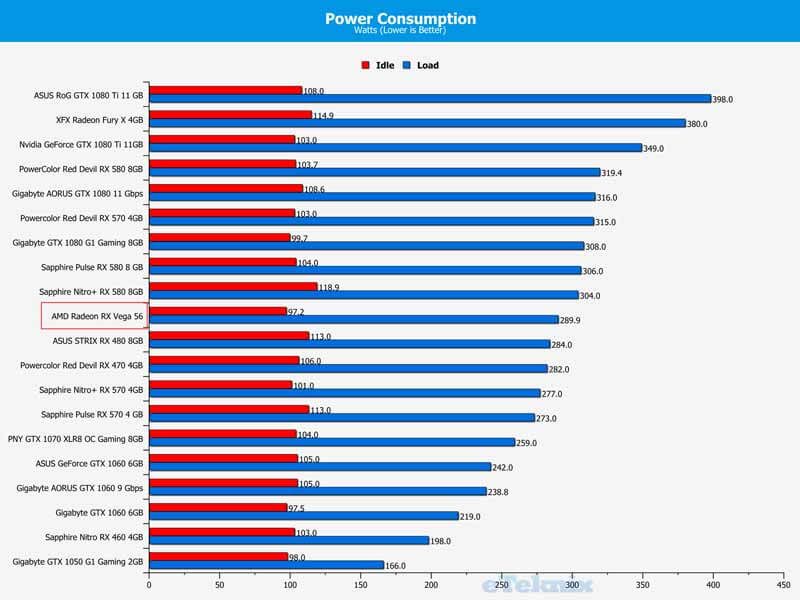
Final Thoughts
Price
Nailing down an accurate price for the AMD Radeon RX Vega 56 isn’t easy right now. What stores that do have the card listed are showing out of stock, and there’s some confusion over prices with the Radeon Packs. AMD provided us with a SEP (Suggested Etail Price) $399, which usually translates right to £399. Right now, you can get a good GTX 1070 starting around the same price, moving up to about £450-£500 for a model with a good overclock. That puts the Vega 56 in a competitive position. If you can get one for the SEP, it’s a decent deal for those eager to invest in AMD hardware. Of course, that all depends on any deals being made available for rival hardware. It’s a tough call.
The Vega 56 will be available from August 28th. So keep an eye out for pre-orders.
Overview
The AMD Radeon Vega 56 is a big step forward for AMD. I’m sure many of you might think that’s it’s not a big enough step, but there are some merits to this card that cannot be ignored. The biggest thing I can see is how it compares to the AMD Radeon Fury X. The model of the Fury X we reviewed has a 120mm AIO cooler strapped to it and launched as an extreme card with HDM1 memory. The Vega 56 is released as the more affordable card of this generation, yet it keeps up with the Fury X very nicely, uses less power than the Fury X, and runs cooler too. To me, that shows fantastic progression for AMD hardware, and it’s something I hope to see continue as the Vega series develops over the coming months and possibly years.
Added Value
AMD has a strong feature set with this GPU that’s sure to have broad appeal. Technologies like Radeon Chill are amazing at providing the gaming performance you need while limiting the amount of power used. This is a great way to counter the higher power usage of an AMD card vs some Nvidia options. It’s something more people need to take notice of, and it’s often much smarter than just turning on VSync.
Of course, AMD also has FreeSync 2 support. Sure, Nvidia has their G-Sync technology, but you pay a premium for it on the GPU, and even more so on the display side of things. There are more FreeSync displays at reasonable prices, and that’s attractive to any consumer. It helps smooth out the frame rate and reduce screen tearing, which is awesome.
The latest Crimson ReLive software continues to impress too. Here you can access features like Enhanced Sync, Radeon Chill, Frame Rate Targeting Control, custom resolution settings, ReLive for gaming streaming, and much more.
Hot Under the Collar
There’s a lot of impressive performance figures to be found about this GPU. However, I think it’s got a lot more to offer to the world. Had AMD stumped themselves sending a reference design card? I certainly think so. The model we tested is a little warm, and a fair bit noisy. Get a big cooler on there from the likes of Sapphire, tweak the clock speeds, and I think it’s got enough legs on it to really give the GTX 1070 a good beating. Of course, if this is just the start of the Vega 56 range, I think there are good things to come. AMD has a strong history of their cards becoming more competitive as they mature, so roll on game and driver optimisations!
The Aesthetics
A blower card this may be, but it’s still one of the best looking ones I’ve ever seen. The build quality looks and feels fantastic, and there’s no denying that. The LED lit logo looks great, the metal backplate and housing certainly add to the overall package too. Of course, if you’re planning to strip that shroud and put a water block on there, you shouldn’t have much trouble doing so, and I’m eager to see what people do to maximise this cards performance.
Should I Buy One?
The ultimate question is a big one, isn’t it! For around £400, there’s a lot of hardware to pick from at the Nvidia camp, and more stock too. The Nvidia cards do run more efficiently too, making them a tempting option for any consumer. However, AMD isn’t exactly slacking here, and the Vega 56 is a big upgrade on the previous generation of Fury cards, and the RX5xx series. For the AMD fan, this is a strong GPU and should you see one at the right price, I’m sure it’ll be snapped up. It has plenty of features that are sure to appeal to any gamer, and I can’t wait to see where AMD takes their Vega series next. Now we really need to get the Vega 64 on our test benches too!
Pros
- Competitive performance
- FreeSync 2
- HDR, Chill, ReLive and More Gaming Friendly Features
- Great Build Quality
- LED Lit Logo
- Big Improvement over Fury series
- HBM2 Memory
Cons
- Blower cooler is a bit noisy and limits overclocking
Neutral
- Efficiency is better, but still plenty of room for improvement
“The Vega 56 is one of the best AMD graphics cards to date, packed full of features that are sure to remain relevant to PC gamers. There’s a lot of potential here, and we’re eager to see stock and prices settle in the coming months.”

AMD Radeon RX VEGA 56 8GB Graphics Card Review
